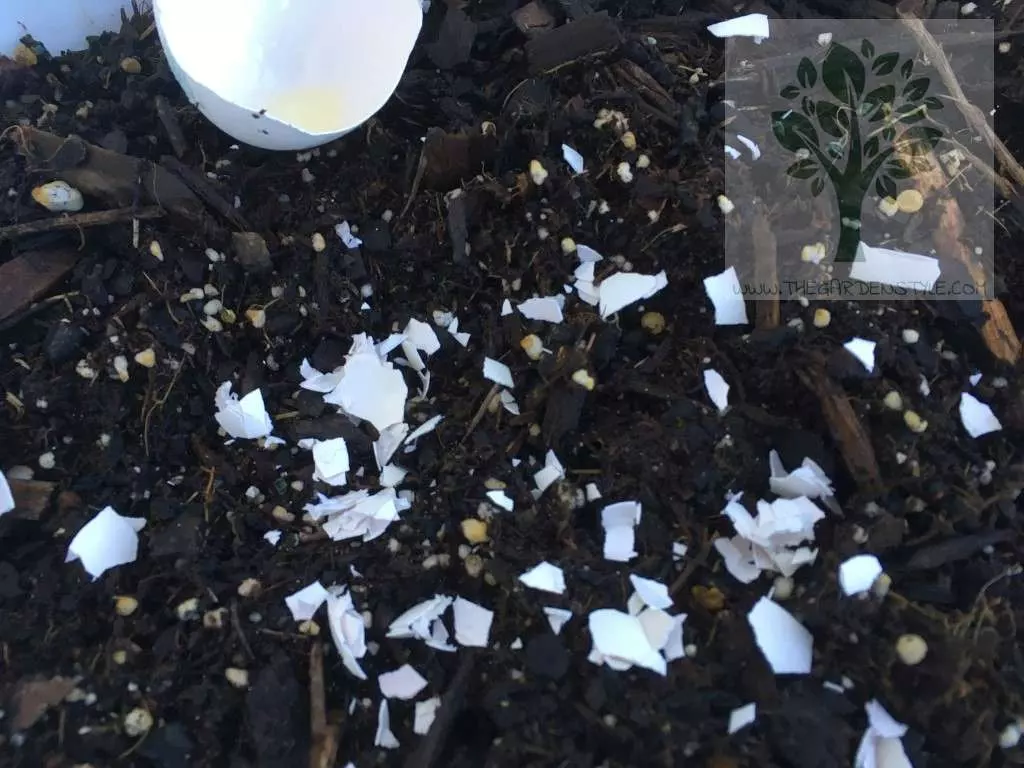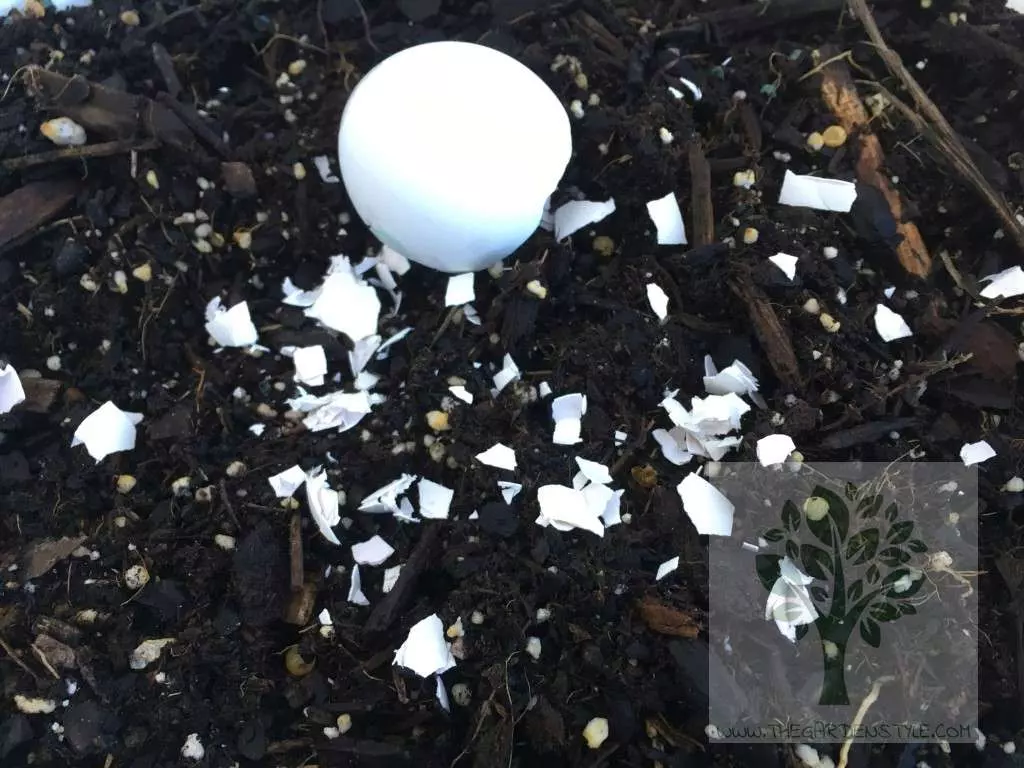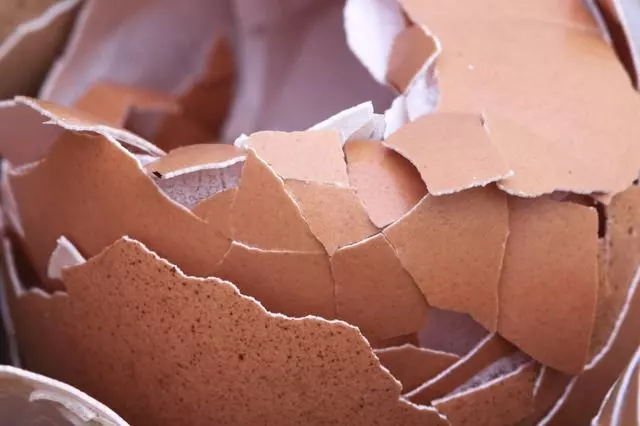Surely when reading this title, you have asked yourself how you didn’t think about it before or what is simpler, that you ask in your head the question: is eggshell good for plants? And the answer is simple: yes, eggshells are very good for plants. Chicken eggs are a very rich contribution due to their nutritional properties, but these do not stay only inside the egg, but also in the shell. Although we do not feed on them, plants know how to get all their benefits. Besides, beyond fertilizing with eggshells the plants you have at home, have many uses.
In the same way, it is also important that you know that the shell of a chicken egg has 96% of calcium carbonate. This makes it one of the best ecological sources of calcium for plants in pots, gardens, or orchards. But its uses don’t stop there, and we want to show you what you can do with eggshells to improve the life of your beloved plants. So, if you are interested, read on and find out what eggshells are for and how to use them.
Table of Contents
Eggshells for Plants
This ecological resource, which you surely always have at hand, offers the opportunity to improve the health of your plant’s thanks to its different properties and uses. Therefore, we wanted to compile some of the benefits of eggshells in plants so that you can get down to work with recycling that part of the egg that is almost always thrown away.
Combat the Plagues of Slugs and Snails
To do this you just need to spread small pieces of crushed eggshells and spread them around the area of your garden or pot that is suffering the ravages of a snail or slug infestation. The eggshell helps create a barrier that slugs or snails will not want to cross as these animals do not like the shells because they prick and bother them.
It is also possible to repel slugs and snails with coffee grounds. To learn more I recommend you to read our article about coffee grounds for plants.
Making A Calcium-Rich Fertilizer
If you are looking to make calcium for your home plants, we encourage you to use eggshells to get it most easily and economically possible. To do this you only need, as we have explained before, to crush the eggshells and place them on the substrate that you use as soil for your plant.
Calcium for plants is one of the richest minerals to improve their development. Therefore, since the release of calcium into the soil is quite slow, many choose to add eggshells to help their crops prevent rotting. If you have roses in your house or garden, we also advise you to use the eggshell to improve the soil and encourage flowering.

Reduce Soil Acidity
Many plants need a specific soil type for their growth. Therefore, a home method to control the acidity of the soil where your plants are located is to add ground eggshells for the plants. To achieve this, you need to add well-milled eggshells for a long period to get good results. Watering water will facilitate the release of the eggshell components into the soil. Learn more about how to measure soil pH.
Eggshell in Compost
If you are one of those who are encouraged to make your organic fertilizer or compost, we encourage you to add eggshell remains to make it much richer and more complete for your plants. I recommend you read our article Red Worms Farm to learn more about composting.
How to Prepare Calcium from Eggshells for Plants
Although we have already commented on how to prepare the eggshell to improve the state and growth of your plants, we want to show you other ways of preparing them beyond crushing them to add them as organic fertilizer or as a repellent. Take note of these tips on how to make calcium from eggshells for your plants:
1- You can use crushed eggshells to make an infusion of these, using the shells of 6 eggs and bringing them to a boil in 3 liters of water. This egg-shell water for plants is a very simple way to add more calcium and other beneficial minerals such as magnesium or phosphorus to your plants through watering doses.
2- Another way to prepare it is by creating eggshell flour. This takes a series of steps that are a little more precise, but that assure you almost immediate results in the well-being of your plants. The only thing you have to do is make sure to let them dry in the shade to avoid them losing the nitrogen they have. You will need quite a few of them, at least a dozen shells, to produce the flour. When they are dry, put them in a bag and crush them with the help of a mortar or a stone until a very fine powder is left, and reserve it in a container with a lid until you use it. Remember that for some of the uses explained above, small pieces of shells are used, but in the case of the flour we are talking about using the powder of these shells, so they have to be crushed to the maximum. Using the eggshell flour is very simple: you only need to add one or several dessert spoons to your pot depending on its size for about 40 days. In this way, they will receive the calcium contribution they need.

When and How Is Eggshell Used for Plants
To finish, we detail a little more about when and how to use the eggshell for plants:
1- As we have already mentioned, eggshells are very rich in calcium, so it will help you to enrich the soil of your garden or your pots if you include it as part of the substrate or compost.
2- We can also change the gravel for well-chopped eggshells to facilitate drainage and at the same time, it will act as a natural fertilizer.
3- Also, if we do not break them entirely, we can use the eggshell as a seedbed. You only need to have half or more of the shell, make a small hole at the bottom to help drainage, and you will get some curious ecological seedlings.
4- Finally, the eggshell is very useful to keep away some pests such as snails and slugs, so when you have problems with these animals, don’t hesitate to remove them manually, take them to another place where they won’t damage your crops and place an eggshell barrier so that they don’t come back into your pots or garden area.

Final Conclusions
When using eggshells for plants, it’s essential to prepare them properly. Crushed eggshells should be finely ground to allow for easier breakdown and nutrient release. They can be applied directly to the soil, incorporated into compost, or used as a top dressing around plants.
By incorporating eggshells into your gardening practices, you can enhance soil fertility, address nutrient deficiencies, and support healthy plant growth, while also repurposing a common household waste product in an eco-friendly manner.

